 A project is a planned series of learning experiences of six hours or more within a particular area of youth interest (Florida 4-H definition). The purpose of a 4-H project is to promote mastery of subject matter and to foster life skill development. This 4-page fact sheet was written by Judith Levings, and published by the UF Department of 4-H Youth Development, August 2014.
A project is a planned series of learning experiences of six hours or more within a particular area of youth interest (Florida 4-H definition). The purpose of a 4-H project is to promote mastery of subject matter and to foster life skill development. This 4-page fact sheet was written by Judith Levings, and published by the UF Department of 4-H Youth Development, August 2014.
http://edis.ifas.ufl.edu/4h343
Author: dihagan
Gardening with Annuals in Florida
 Annuals offer an almost infinite variety of flower color and plant form. They brighten landscape beds and add a splash of color to a porch, deck, or patio when placed in containers. Some also make good cut flowers. This 6-page fact sheet was written by Sydney Park Brown, and published by the UF Department of Environmental Horticulture, August 2014.
Annuals offer an almost infinite variety of flower color and plant form. They brighten landscape beds and add a splash of color to a porch, deck, or patio when placed in containers. Some also make good cut flowers. This 6-page fact sheet was written by Sydney Park Brown, and published by the UF Department of Environmental Horticulture, August 2014.
http://edis.ifas.ufl.edu/mg319
A Parasitoid Wasp Cotesia congregata (Say) (Insecta: Hymenoptera: Braconidae
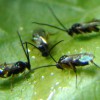 This species of Cotesia has been widely used as a model system in insect physiology. It has also been used to examine insect learning in host-parasitoid-plant interactions. It is an important natural enemy of the tobacco hornworm, a detrimental pest species that feeds on many plants in the Solanaceae (tobacco, pepper, tomato, etc.) family. This 5-page fact sheet was written by Christopher D. Crockett, Andrea Lucky, Oscar E. Liburd, and Karen M. Kester, and published by the UF Department of Entomology and Nematology, July 2014.
This species of Cotesia has been widely used as a model system in insect physiology. It has also been used to examine insect learning in host-parasitoid-plant interactions. It is an important natural enemy of the tobacco hornworm, a detrimental pest species that feeds on many plants in the Solanaceae (tobacco, pepper, tomato, etc.) family. This 5-page fact sheet was written by Christopher D. Crockett, Andrea Lucky, Oscar E. Liburd, and Karen M. Kester, and published by the UF Department of Entomology and Nematology, July 2014.
http://edis.ifas.ufl.edu/in1042
Elder Nutrition
 Good nutrition is important throughout life, starting even before we are born. However, at certain stages in life, such as infancy, pregnancy, and in older age, the importance of having good eating habits is especially critical. This 8-page fact sheet focuses on how aging affects nutrition and diet and choices that older adults can make to improve or maintain their health and well-being as they age.was written by Linda B. Bobroff and Martie Gillen, and published by the UF Department of Family Youth and Community Sciences, April 2014.
Good nutrition is important throughout life, starting even before we are born. However, at certain stages in life, such as infancy, pregnancy, and in older age, the importance of having good eating habits is especially critical. This 8-page fact sheet focuses on how aging affects nutrition and diet and choices that older adults can make to improve or maintain their health and well-being as they age.was written by Linda B. Bobroff and Martie Gillen, and published by the UF Department of Family Youth and Community Sciences, April 2014.
http://edis.ifas.ufl.edu/fy628
Clostridium difficile: an Important Opportunistic Pathogen in Healthcare-Associated Infections
 Opportunistic pathogens are significant health threats to vulnerable people with weakened immune systems, such as people with HIV/AIDS or those on immune-suppressing therapies. One opportunistic pathogen, Clostridium difficile, has been getting more attention in recent years because of its association with antibiotic use and high death rate in the elderly. This factsheet will provide an overview of Clostridium difficile infection (CDI) with a focus on healthcare-associated infections. This 5-page fact sheet was written by Soohyoun Ahn and Amarat H. Simonne, and published by the UF Department of Food Science and Human Nutrition, September 2014.
Opportunistic pathogens are significant health threats to vulnerable people with weakened immune systems, such as people with HIV/AIDS or those on immune-suppressing therapies. One opportunistic pathogen, Clostridium difficile, has been getting more attention in recent years because of its association with antibiotic use and high death rate in the elderly. This factsheet will provide an overview of Clostridium difficile infection (CDI) with a focus on healthcare-associated infections. This 5-page fact sheet was written by Soohyoun Ahn and Amarat H. Simonne, and published by the UF Department of Food Science and Human Nutrition, September 2014.
http://edis.ifas.ufl.edu/fs253
A guide to Florida's common bark and ambrosia beetles
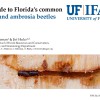 This 36-page guide provides an introduction to the biology and identification of Florida’s bark and ambrosia beetles. Written by Craig Bateman and Jiri Hulcr, and published by the UF Department of School of Forest Resources and Conservation, September 2014.
This 36-page guide provides an introduction to the biology and identification of Florida’s bark and ambrosia beetles. Written by Craig Bateman and Jiri Hulcr, and published by the UF Department of School of Forest Resources and Conservation, September 2014.
http://edis.ifas.ufl.edu/fr389
Forest Resource Information on the Internet: Connecting to Today’s On-line Resources
 In 1997, the UF/IFAS School of Forest Resources and Conservation (SFRC) published Forest Resource Information on the Internet, which provided detailed information about the Internet: its history, structure, and how to use it. It also provided a sample of forest resource websites. Much has changed since the first publication. This is the third revision of this document, providing updated information on the latest landowner assistance websites available. These state, regional, and national resources can serve as a springboard to a wide variety of natural resource information and programs. This 4-page fact sheet was written by Chris Demers, and published by the UF Department of School of Forest Resources and Conservation, May 2014.
In 1997, the UF/IFAS School of Forest Resources and Conservation (SFRC) published Forest Resource Information on the Internet, which provided detailed information about the Internet: its history, structure, and how to use it. It also provided a sample of forest resource websites. Much has changed since the first publication. This is the third revision of this document, providing updated information on the latest landowner assistance websites available. These state, regional, and national resources can serve as a springboard to a wide variety of natural resource information and programs. This 4-page fact sheet was written by Chris Demers, and published by the UF Department of School of Forest Resources and Conservation, May 2014.
http://edis.ifas.ufl.edu/fr182
Increasing Efficiency in Extension Using the Train-the-Trainer Approach
 Extension has adapted to today’s financial realities through a number of strategies, including increased reliance on partnerships. One strategy that expands the reach of an Extension agent and capitalizes on partners is the “train-the-trainer” approach.This 4-page fact sheet describes the train-the-trainer approach as it applies to Extension programming, provides contextual examples from within and beyond UF/IFAS Extension, and offers best management practices. Written by Laura A. Warner, Amy Harder, Tom Wichman, and Frank Dowdle, and published by the UF Department of Agricultural Education and Communication, September 2014.
Extension has adapted to today’s financial realities through a number of strategies, including increased reliance on partnerships. One strategy that expands the reach of an Extension agent and capitalizes on partners is the “train-the-trainer” approach.This 4-page fact sheet describes the train-the-trainer approach as it applies to Extension programming, provides contextual examples from within and beyond UF/IFAS Extension, and offers best management practices. Written by Laura A. Warner, Amy Harder, Tom Wichman, and Frank Dowdle, and published by the UF Department of Agricultural Education and Communication, September 2014.
http://edis.ifas.ufl.edu/wc170
Engaging Consumers in At-Home Water Conservation: A Guide for Extension
 With a growing urban population and increased demands on water for recreational and agricultural purposes, Florida will have to identify a solution to its water quality and quantity issues. Although all Florida residents will play a part in conserving water in the future, the ability of Extension faculty to work with consumers and encourage new water conservation behaviors at home will be vital. This 4-page fact sheet provides information to Extension faculty about the water conservation behaviors in which Florida residents currently engage, water conservation product ownership, and public interest in water-related topics. Written by Caroline G. Roper and Alexa J. Lamm, and published by the UF Department of Agricultural Education and Communication, September 2014.
With a growing urban population and increased demands on water for recreational and agricultural purposes, Florida will have to identify a solution to its water quality and quantity issues. Although all Florida residents will play a part in conserving water in the future, the ability of Extension faculty to work with consumers and encourage new water conservation behaviors at home will be vital. This 4-page fact sheet provides information to Extension faculty about the water conservation behaviors in which Florida residents currently engage, water conservation product ownership, and public interest in water-related topics. Written by Caroline G. Roper and Alexa J. Lamm, and published by the UF Department of Agricultural Education and Communication, September 2014.
http://edis.ifas.ufl.edu/wc169
Attribution Theory: How is it Used?
 Attribution theory is defined as the way that individuals envision the success or failure of their own behavior or the behavior of others. This 4-page fact sheet explains how instructors, whether formal or informal, can use this theory in their learning environment to enhance their learners’ knowledge and comprehension. Written by Eric D. Rubenstein and Andrew C. Thoron, and published by the UF Department of Agricultural Education and Communication, September 2014.
Attribution theory is defined as the way that individuals envision the success or failure of their own behavior or the behavior of others. This 4-page fact sheet explains how instructors, whether formal or informal, can use this theory in their learning environment to enhance their learners’ knowledge and comprehension. Written by Eric D. Rubenstein and Andrew C. Thoron, and published by the UF Department of Agricultural Education and Communication, September 2014.
http://edis.ifas.ufl.edu/wc162
Adaptation Approaches to Sea-Level Rise in Florida
 There is consensus among the scientific community that climate change is occurring and will have far-reaching effects on our global ecosystems and human systems. In Florida, adaptation to climate change is occurring in both natural and human systems. As coastal communities prepare for sea-level rise, they can use several strategies to integrate natural adaptation processes into their planning processes. By taking a proactive approach to adaptation rather than a reactive one, communities will be able to better protect the resources upon which they depend. This 4-page fact sheet was written by Ondine Wells, Whitney Gray, and Paul Monaghan, and published by the UF Department of Agricultural Education and Communication, July 2014.
There is consensus among the scientific community that climate change is occurring and will have far-reaching effects on our global ecosystems and human systems. In Florida, adaptation to climate change is occurring in both natural and human systems. As coastal communities prepare for sea-level rise, they can use several strategies to integrate natural adaptation processes into their planning processes. By taking a proactive approach to adaptation rather than a reactive one, communities will be able to better protect the resources upon which they depend. This 4-page fact sheet was written by Ondine Wells, Whitney Gray, and Paul Monaghan, and published by the UF Department of Agricultural Education and Communication, July 2014.
http://edis.ifas.ufl.edu/wc171
Extension and the Environment: Understanding Florida Residents' Perceptions of Environmental Water-Related Topics
 By understanding Florida residents’ perceptions of water quality and quantity issues, Extension faculty can better communicate with them about water quantity and quality issues. This 4-page fact sheet explores Florida residents’ perceptions of water topics related to environmental issues. Written by Caroline G. Roper and Alexa J. Lamm, and published by the UF Department of Agricultural Education and Communication, September 2014.
By understanding Florida residents’ perceptions of water quality and quantity issues, Extension faculty can better communicate with them about water quantity and quality issues. This 4-page fact sheet explores Florida residents’ perceptions of water topics related to environmental issues. Written by Caroline G. Roper and Alexa J. Lamm, and published by the UF Department of Agricultural Education and Communication, September 2014.
http://edis.ifas.ufl.edu/wc167
Protecting Youth and Volunteers by Planning Ahead, Reducing Risk
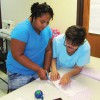 The UF/IFAS Extension 4-H Youth Development Program is committed to the safety and well-being of its youth as well as the volunteers who help deliver 4-H programs under the supervision of 4-H faculty and staff. All things in life involve some sort of risk. This is especially true when working with youth, but there are many ways that volunteers can minimize this risk and lead safe 4-H activities. Proper planning and common sense certainly go a long way. Although not to be considered legal advice, here are some facts and issues to know and keep in mind while serving as a 4-H volunteer. This 3-page fact sheet was written by Keith G. Diem, and published by the UF Department of 4-H Youth Development, July 2014.
The UF/IFAS Extension 4-H Youth Development Program is committed to the safety and well-being of its youth as well as the volunteers who help deliver 4-H programs under the supervision of 4-H faculty and staff. All things in life involve some sort of risk. This is especially true when working with youth, but there are many ways that volunteers can minimize this risk and lead safe 4-H activities. Proper planning and common sense certainly go a long way. Although not to be considered legal advice, here are some facts and issues to know and keep in mind while serving as a 4-H volunteer. This 3-page fact sheet was written by Keith G. Diem, and published by the UF Department of 4-H Youth Development, July 2014.
http://edis.ifas.ufl.edu/4h342
Phoenix roebelenii: Pygmy Date Palm
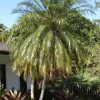 The pygmy date palm is one of the most popular small landscape palms in Florida. It is single-stemmed, but is often grown in clumps of 2–4 closely spaced individuals which, when older, give the impression of a multi-stemmed palm. This 4-page fact sheet was written by Timothy K. Broschat, and published by the UF Department of Environmental Horticulture, August 2014.
The pygmy date palm is one of the most popular small landscape palms in Florida. It is single-stemmed, but is often grown in clumps of 2–4 closely spaced individuals which, when older, give the impression of a multi-stemmed palm. This 4-page fact sheet was written by Timothy K. Broschat, and published by the UF Department of Environmental Horticulture, August 2014.
http://edis.ifas.ufl.edu/st441
Soil and Plant Tissue Testing
 Soil testing is the best tool for monitoring soil fertility levels and providing baseline information for cost-effective fertilization programs. But a major limitation is that it typically accounts for the plant-available nutrient pool present in the surface soil layer. Because of the extensive root system in some plants, plant analysis is a complement to the soil test to better assess the overall nutrient status of a perennial forage system, while revealing imbalances among nutrients that may affect crop production. This 4-page fact sheet was written by Maria L. Silveira, and published by the UF Department of Soil and Water Science, June 2014.
Soil testing is the best tool for monitoring soil fertility levels and providing baseline information for cost-effective fertilization programs. But a major limitation is that it typically accounts for the plant-available nutrient pool present in the surface soil layer. Because of the extensive root system in some plants, plant analysis is a complement to the soil test to better assess the overall nutrient status of a perennial forage system, while revealing imbalances among nutrients that may affect crop production. This 4-page fact sheet was written by Maria L. Silveira, and published by the UF Department of Soil and Water Science, June 2014.
http://edis.ifas.ufl.edu/ss625
Extraction of Soil Nutrients Using Mehlich-3 Reagent for Acid-Mineral Soils of Florida
 Soil testing is a multistep process starting with the collection of a sample that adequately represents the area or field to be tested. Due to wide-ranging soil conditions across Florida and the United States, multiple soil test methods exist. During the 1970s, Florida along with several other southeastern US states adopted Mehlich-1 (M1) as the official extractant for acidic soils. The UF/IFAS Plant Nutrient Oversight Committee approved the change from M1 to M3 in 2010. Based on observations of the interpretations, the technical committee revised the M3 interpretation in March 2014. The new interpretations have been correlated with the M1 interpretations, as closely and realistically as possible, so the actual nutrient recommendations are not changed. This 7-page fact sheet was written by Rao Mylavarapu, Tom Obreza, Kelly Morgan, George Hochmuth, Vimala Nair, and Alan Wright, and published by the UF Department of Soil and Water Science, May 2014.
Soil testing is a multistep process starting with the collection of a sample that adequately represents the area or field to be tested. Due to wide-ranging soil conditions across Florida and the United States, multiple soil test methods exist. During the 1970s, Florida along with several other southeastern US states adopted Mehlich-1 (M1) as the official extractant for acidic soils. The UF/IFAS Plant Nutrient Oversight Committee approved the change from M1 to M3 in 2010. Based on observations of the interpretations, the technical committee revised the M3 interpretation in March 2014. The new interpretations have been correlated with the M1 interpretations, as closely and realistically as possible, so the actual nutrient recommendations are not changed. This 7-page fact sheet was written by Rao Mylavarapu, Tom Obreza, Kelly Morgan, George Hochmuth, Vimala Nair, and Alan Wright, and published by the UF Department of Soil and Water Science, May 2014.
http://edis.ifas.ufl.edu/ss620
Heirloom Eggplant Varieties in Florida
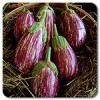 Eggplant has a colorful heritage. It was first domesticated more than 4,000 years ago. Ancient Chinese crossbred varieties with different shapes and colors. It migrated to Egypt during the 9th to 12th centuries AD, the Moors introduced eggplant to the Spanish, who took the eggplant to South America around 1650, and in 1806, Thomas Jefferson introduced the eggplant to the United States after receiving the fruit from a friend in France. As opposed to the modern-day hybrid cultivars, heirlooms are old cultivars generated by handing down seeds from generation to generation. This 6-page fact sheet is a guide to heirloom eggplant varieties used in Florida. Written by Monica Ozores-Hampton, and published by the UF Department of Horticultural Sciences, November 2014.
Eggplant has a colorful heritage. It was first domesticated more than 4,000 years ago. Ancient Chinese crossbred varieties with different shapes and colors. It migrated to Egypt during the 9th to 12th centuries AD, the Moors introduced eggplant to the Spanish, who took the eggplant to South America around 1650, and in 1806, Thomas Jefferson introduced the eggplant to the United States after receiving the fruit from a friend in France. As opposed to the modern-day hybrid cultivars, heirlooms are old cultivars generated by handing down seeds from generation to generation. This 6-page fact sheet is a guide to heirloom eggplant varieties used in Florida. Written by Monica Ozores-Hampton, and published by the UF Department of Horticultural Sciences, November 2014.
http://edis.ifas.ufl.edu/hs1242
Characterization of the Florida Fresh Fruit and Vegetable Industry Using Hydroponic Systems or Protected Agriculture Structures
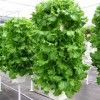 UF/IFAS Extension faculty, allied industry representatives, and growers determined the need to assess the size and scope of the protected agriculture industry in 2013 by surveying growers in Florida. The primary focus was to document the types of protected agriculture structures, crops, and growing systems being used. In addition, secondary information on location of operations, pest concerns, expected expansion, etc. was collected on many operations. The results documented a significant expansion of the industry in terms of both size and scope. This 8-page fact sheet was written by Robert C. Hochmuth and Dilcia E. Toro, and published by the UF Department of Horticultural Sciences, August 2014.
UF/IFAS Extension faculty, allied industry representatives, and growers determined the need to assess the size and scope of the protected agriculture industry in 2013 by surveying growers in Florida. The primary focus was to document the types of protected agriculture structures, crops, and growing systems being used. In addition, secondary information on location of operations, pest concerns, expected expansion, etc. was collected on many operations. The results documented a significant expansion of the industry in terms of both size and scope. This 8-page fact sheet was written by Robert C. Hochmuth and Dilcia E. Toro, and published by the UF Department of Horticultural Sciences, August 2014.
http://edis.ifas.ufl.edu/hs1240
Alligator Abundance and Hydrology (2003–2013): What Long-term Monitoring Can Tell Us about Everglades Restoration
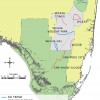 The American alligator is a powerful indicator for Everglades restoration. It responds clearly to environmental change and is easy and inexpensive to monitor. As top predators and ecological “engineers,” alligators affect nearly all aquatic life in the ecosystem. Thus, trends in alligator populations can tell us whether restoration projects are successful. Alligators may be monitored for both short-term responses (body condition) and longer-term responses to ecosystem change (abundance). This 3-page fact sheet discusses trends in alligator abundance. It was written by Rebecca G. Harvey, Jeff Beauchamp, Robin Bijlani, Frank J. Mazzotti, and Laura A. Brandt, and published by the UF Department of Wildlife Ecology and Conservation, July 2014.
The American alligator is a powerful indicator for Everglades restoration. It responds clearly to environmental change and is easy and inexpensive to monitor. As top predators and ecological “engineers,” alligators affect nearly all aquatic life in the ecosystem. Thus, trends in alligator populations can tell us whether restoration projects are successful. Alligators may be monitored for both short-term responses (body condition) and longer-term responses to ecosystem change (abundance). This 3-page fact sheet discusses trends in alligator abundance. It was written by Rebecca G. Harvey, Jeff Beauchamp, Robin Bijlani, Frank J. Mazzotti, and Laura A. Brandt, and published by the UF Department of Wildlife Ecology and Conservation, July 2014.
http://edis.ifas.ufl.edu/uw387
Florida Forest Landowner Preferences for Carbon Offset Program Characteristics
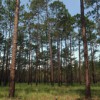 This 7-page fact sheet explains how carbon-offset programs operate and examines their benefits to landowners and the environment, especially in Florida and the southeast US. A summary of a recent study of Florida forest landowners is used to better reveal views on forest carbon-offset programs and their willingness-to-accept monetary compensation for their enrollment in such programs. Written by José R. Soto, Damian C. Adams, and Francisco J. Escobedo, and published by the UF Department of School of Forest Resources and Conservation, July 2014.
This 7-page fact sheet explains how carbon-offset programs operate and examines their benefits to landowners and the environment, especially in Florida and the southeast US. A summary of a recent study of Florida forest landowners is used to better reveal views on forest carbon-offset programs and their willingness-to-accept monetary compensation for their enrollment in such programs. Written by José R. Soto, Damian C. Adams, and Francisco J. Escobedo, and published by the UF Department of School of Forest Resources and Conservation, July 2014.
http://edis.ifas.ufl.edu/fr388